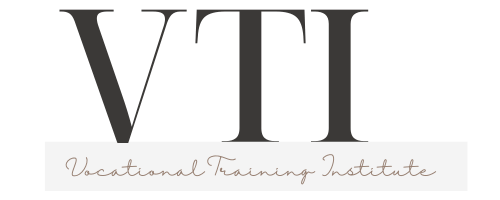Are you feeling overwhelmed by the maze of qualifications in the Australian Qualifications Framework (AQF) for Vocational Education and Training (VET)? You’re not alone.
With over 4,000 registered training providers and more than 26,000 courses available, it’s easy to get lost. But fear not! This article will guide you through the AQF pathways, helping you align your qualifications with industry standards.
Get ready to make informed decisions and pave your way to a successful VET career.
Key Takeaways
- AQF provides a clear hierarchy of qualifications from Certificate I to Doctoral Degree, allowing individuals to progress in their education and career while aligning with industry standards.
- Different pathways are available within AQF for vocational education and training, allowing individuals to start with lower-level qualifications and progress to higher-level qualifications in the same field.
- Recognition of prior learning or work experience can fast-track qualification, enabling individuals to gain recognition for their existing skills and knowledge.
- Aligning AQF qualifications with industry standards ensures that the qualifications are relevant and meet the changing skill requirements of the workforce. Regular consultation with industry stakeholders, mapping qualifications to industry standards, and collaboration with employers are all part of this process.
Understanding the Australian Qualifications Framework (AQF)
You should start by familiarizing yourself with the Australian Qualifications Framework (AQF). This framework is a national policy that ensures the quality and consistency of qualifications across Australia. It’s important to understand the AQF recognition and how it compares to international qualifications.
The AQF recognizes qualifications from different education and training sectors, including vocational education and training (VET), higher education, and schools. It provides a clear and consistent hierarchy of qualifications, ranging from Certificate I to Doctoral Degree.
When comparing AQF qualifications to international qualifications, it’s important to note that the AQF is aligned with the qualifications frameworks of many other countries. This makes it easier for individuals with an AQF qualification to have their qualifications recognized internationally.
Overview of the AQF Levels and Qualifications
To understand the AQF levels and qualifications, it’s helpful to know the hierarchy and types of qualifications offered under the framework. The Australian Qualifications Framework (AQF) consists of ten levels that represent different stages of education and training. These levels provide a clear progression from foundation skills to advanced knowledge and skills.
Here is an overview of the AQF levels and qualifications:
-
Level 1: Certificates I-IV – These qualifications provide basic vocational skills and knowledge.
-
Level 5: Diploma – This qualification prepares individuals for skilled work or further learning.
-
Level 6: Advanced Diploma, Associate Degree – These qualifications provide specialized knowledge and skills.
-
Level 7: Bachelor Degree – This qualification prepares individuals for professional careers.
-
Level 9: Master’s Degree, Doctoral Degree – These qualifications demonstrate advanced knowledge and expertise.
The AQF levels and pathways enable individuals to progress in their education and career. AQF qualifications are aligned with industry standards, ensuring that graduates are equipped with the necessary skills and knowledge demanded by employers.
Navigating the AQF Pathways in VET
How can you navigate the AQF pathways in VET?
When it comes to vocational education, there are various pathways within the Australian Qualifications Framework (AQF) that you can explore. These pathways provide you with different options to progress in your chosen field or to explore new areas of interest.
One pathway is the option to complete a lower-level qualification and then progress to a higher-level qualification in the same field. This allows you to build upon your existing skills and knowledge.
Another pathway is the option to gain recognition for prior learning or work experience, which can be used to fast-track your qualification.
Additionally, you can also choose to undertake further study in a related field to expand your skillset and increase your career opportunities.
Aligning AQF Qualifications With Industry Standards
Aligning AQF qualifications with industry standards is crucial for ensuring that vocational education and training programs consistently meet the needs and demands of the workforce. By aligning industry standards with AQF qualifications, the skills and knowledge acquired by learners will directly translate into real-world applications. This helps bridge the skills gap and ensures that graduates are equipped with the necessary competencies to succeed in their chosen field.
To achieve this alignment, several strategies can be employed:
- Regular consultation with industry stakeholders to identify changing skill requirements and emerging trends.
- Mapping AQF qualifications to relevant industry standards and benchmarks.
- Collaborating with employers to develop work-integrated learning opportunities that provide practical experience.
- Conducting regular reviews and updates of AQF qualifications to ensure they remain relevant to industry needs.
- Encouraging ongoing professional development for trainers and assessors to ensure their knowledge and skills align with industry standards.
Through these efforts, AQF qualifications can effectively bridge the skills gap and produce job-ready graduates who are well-prepared for the workforce.
Making Informed Decisions for Your VET Studies and Career Pathway
You can explore various options and opportunities for your VET studies and career pathway by researching and gathering information about different qualifications and industry requirements. When considering your vet study options, it’s important to assess your interests, skills, and goals.
Look into the different qualifications available within your chosen industry and understand the skill sets they offer. Additionally, research the job market and career opportunities associated with these qualifications. Consider factors such as job demand, salary potential, and career progression.
It’s also beneficial to speak with professionals already working in the industry to gain insights into the real-world expectations and challenges.
Conclusion
In conclusion, navigating through the Australian Qualifications Framework (AQF) in VET requires a deep understanding of its levels and qualifications. By aligning AQF qualifications with industry standards, individuals can make informed decisions for their VET studies and career pathway.
Just like a skilled navigator, you must chart your course through the AQF, using its pathways to guide you towards success. With careful consideration and the right qualifications, you can confidently navigate the vast sea of opportunities that await you in the Australian vocational education and training system.



